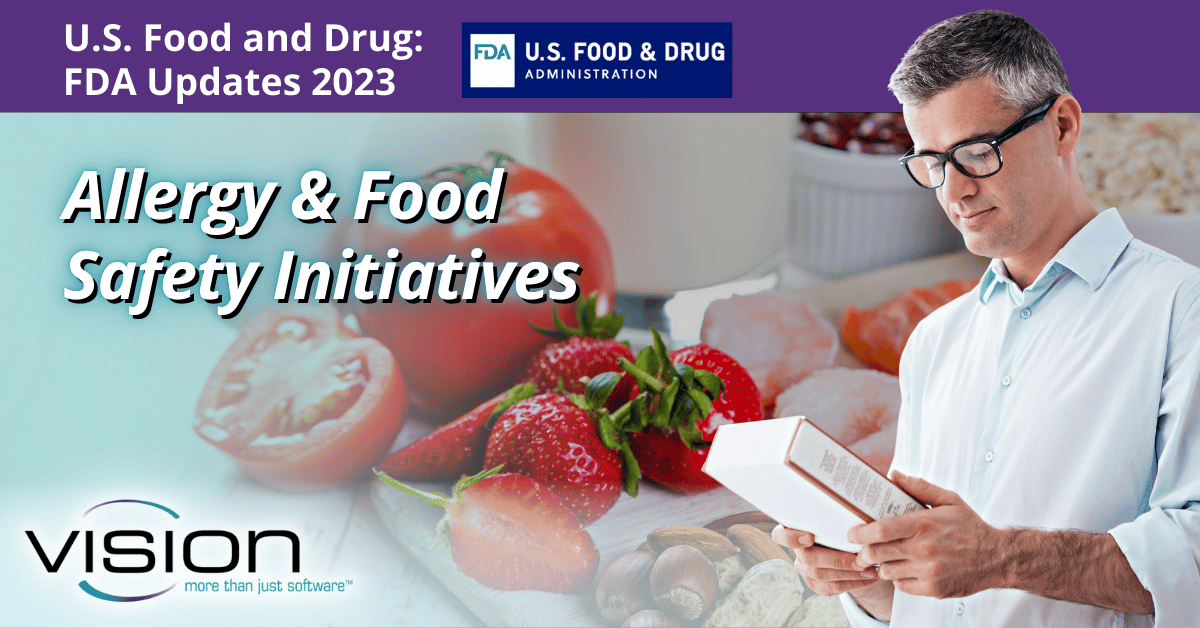It’s exciting to see many food safety initiatives have been activated since the beginning of 2023.
FDA Issues Guidance Documents on Food Allergen Labeling Requirements:
The U.S. Food and Drug Administration (FDA) issued two guidance documents about food allergen labeling requirements to help the food industry meet the requirements to list any major food allergen on the labels of FDA-regulated foods. Food labels are a powerful tool to help protect consumers with food allergies. Consumers can avoid ingredients they may be allergic or sensitive to in a food by looking for specific allergen labeling and reading the ingredient list.
One of the guidance documents is a draft guidance titled Questions and Answers Regarding Food Allergens, Including the Food Allergen Labeling Requirements of the Federal Food, Drug, and Cosmetic Act (Edition 5); Guidance for Industry. This draft guidance updates the previous edition (Edition 4) with new and revised questions and answers related to the labeling of food allergens, including requirements in the Food Allergy Safety, Treatment, Education, and Research Act of 2021 (FASTER Act) and the Food Allergen Labeling and Consumer Protection Act of 2004 (FALCPA).
The FALCPA amended the Federal Food, Drug, and Cosmetic Act (FD&C Act) by defining the term “major food allergen” and requiring that foods or ingredients that contain a major food allergen be specifically labeled with the name of the allergen source. This law identified eight foods as major food allergens: milk, eggs, fish, shellfish, tree nuts, peanuts, wheat, and soybeans. The FASTER Act, among other things, adds sesame to the list of major food allergens effective January 1, 2023, which will make it the ninth major food allergen recognized in the U.S.
Read more at:
- Draft Guidance for Industry: Questions and Answers Regarding Food Allergen Labeling (Edition 5) | FDA
- https://www.federalregister.gov/documents/2022/11/30/2022-26110/questions-and-answers-regarding-food-allergens-including-the-food-allergen-labeling-requirements-of
Allergic to Sesame? Food Labels Now Must List Sesame as an Allergen
Sesame became the ninth major food allergen through the Food Allergy Safety, Treatment, Education, and Research (FASTER) Act, a federal law passed in 2021. The other eight major food allergens were defined through a federal law passed in 2004. While many kinds of foods can cause allergies, federal laws focus on the most common ones and require that food labels identify food source of a major food allergen using its common or usual name on the label.
The nine major food allergens that cause most serious food allergic reactions in the U.S., and are listed below:
- Eggs
- Fish (such as bass, flounder, cod)
- Crustacean Shellfish (such as crab, lobster, shrimp)
- Milk
- Peanuts
- Sesame
- Soybeans
- Tree Nuts (such as almonds, walnuts, pecans)
- Wheat








